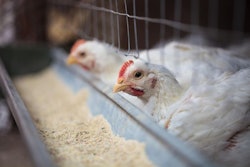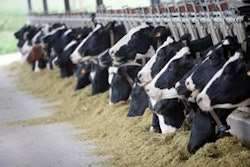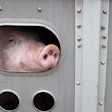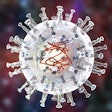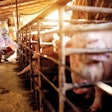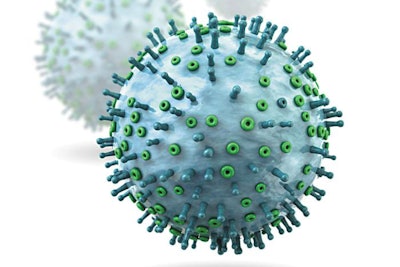
A study has found that livestock viruses can survive in animal feed and that “the right virus paired with the right ingredient” can cause transmission of viruses from other countries in imported feed.
According to the study, the 1997 outbreak of foot and mouth disease in Taiwan cost $379 million and resulted in the slaughter of 40 percent of the country’s pig herd. In 2001, foot and mouth disease in the United Kingdom cost up to $18.4 billion and resulted in the slaughter of 7 million animals.
And, animal feed was found to be the cause for how the swine enteric coronavirus disease viruses – including porcine epidemic diarrhea (PED) virus and swine delta coronavirus – entered the United States.
In this study, 11 viruses were examined, including foot and mouth disease virus, classical swine fever virus, African swine fever virus, influenza A virus of swine, porcine reproductive and respiratory syndrome virus and porcine circovirus type 2.
The study evaluated the survival of livestock pathogens in animal feed ingredients imported into the United States via either Trans-Pacific or Trans-Atlantic shipping. The Trans-Pacific model was used to assess the survival of 10 viruses endemic to Asia – specifically China, from where the U.S. imports tons of animal feed daily. The Trans-Atlantic model was used for African swine fever virus, which has spread throughout the Caucasus, Eastern Europe and the Baltic states and is now endemic in the region.
Researchers simulated the temperature and humidity conditions over the time an ingredient would travel from its origin to its destination, for example, from China to the Midwestern U.S.
Eleven animal feed ingredients or products of animal origin imported into the U.S. from Asia and/or Eastern Europe were evaluated: organic and conventional soybean meal, soy oil cake, dried distillers’ grains with solubles (DDGS), lysine hydrochloride, vitamin D, choline chloride, moist cat food, moist dog food, dry dog food and natural pork sausage casings.
Study findings
A total of 1,232 samples were tested in the study. Of the viruses studied, seven remained viable in two or more ingredients. Researchers note that there was a wide variation in viability across viruses.
The study also found that the feed ingredients may be the reason the viruses survive: With the exception of African swine fever virus, the viruses did not survive without a feed ingredient.
The study’s authors said the results confirm their previous findings on the survival of PEDv in animal feed.
“These findings support the hypothesis that contaminated feed ingredients could serve as vehicles for the transport of viral pathogens between regions, countries or even across continents,” the study said. “Most importantly, our findings expand the scope and highlight the need for improved ‘feed biosecurity’ on imported products that are intended for use in animal diets.”
The study said the specific conclusions that can be drawn from the project include:
- Viruses can survive in feed, but survival is variable and depends on specific properties of each virus.
- Certain feed ingredients or feed products present a better matrix for virus survival than others.
- Select ingredient matrices seemed to enhance the survival of multiple viruses.
The study’s authors say they hope their work will lead to more communication and collaboration between the animal feed and livestock industries, resulting in greater global feed biosecurity.

